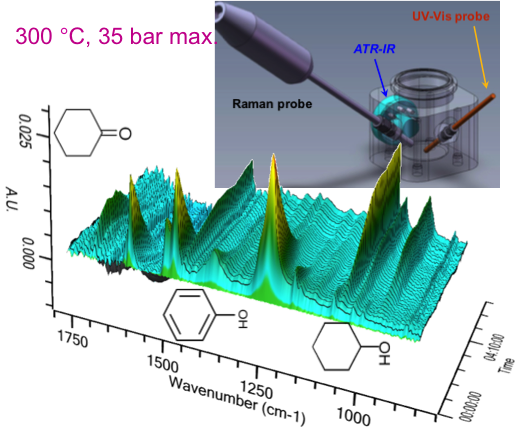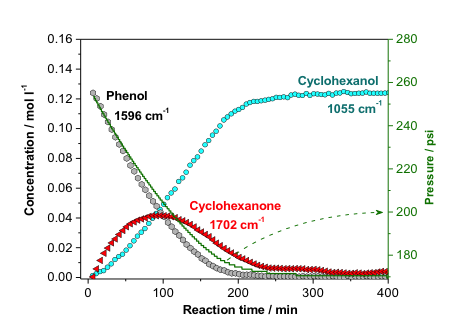In-situ Spectroscopy for Reaction Kinetics
by Z. Liu, I. Hamad, Y. Li, Y. Chen, S. Wang, S. Crossley, F. Jentoft
Work was performed at: The University of Oklahoma and The University of Tulsa
Scientific Achievement
A special autoclave with in-situ spectroscopic probes (IR, Raman, and UV/Vis) was designed, built and used to study real time hydrogenation of phenols and cresols for bio-oil upgrading.
Figures: Upper:Images of reactor with spectroscopic probes. Middle: In-situ ATR-IR spectra of phenol hydrogenation
Significance and Impact
The selective conversion of lignin-derived phenolic compounds is one of the great challenges associated with the upgrading of bio oil. The presence of ketone intermediates provides insight into the role of solvent on their desorption and mechanism of conversion. In-situ spectroscopy allows the detailed study of these intermediates.
Research Details
- Some oxygenates can decompose and deactivate the hydrogenation of phenols over Pt, Pd and Ni catalysts.
- The solvent (water vs. oil) has a strong effect on the reaction pathway and selectivity in hydrogenation of cresols over Pt catalysts.
- DFT calculations (from TU) provide atomic-scale understanding of the adsorption geometry, competitive adsorption, and role of solvent in hydrogenation of phenolic compounds.
Figure:Concentration profiles evolved from IR spectra
 Back
Back

